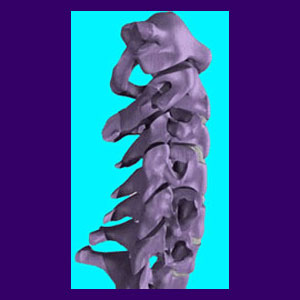
A spinal tumor is a relatively rare event, which can range in severity from completely innocent and asymptomatic to life-threatening. Tumors can be cancerous or benign and may or may not create back pain and related neurological symptoms. Obviously, if you suspect that you might have a tumor on or near your spine, you should seek professional medical attention right away.
This article details tumors on the spine which can cause back or neck pain. We will investigate benign tumors, as well as explore various forms of spinal cancer.
Types of Spinal Tumor
Cancerous tumors on the spine generally have metastasized from another affected location. The spine is extremely rare as the original and primary site for cancerous growth. Far more common is the incidence of lung, breast or pancreatic cancer spreading to the spinal region.
Non-cancerous tumors are more common and can be congenital or developed at some point in life. While most dorsal tumors are relatively slow growing and small, it is possible to experience a large or even huge tumor which might be on or near the spinal structures.
Spinal Tumor Versus Spinal Cord Tumor
There are three main designations of tumors which affect the spinal structures:
Extradural tumors exist outside of the protective structures which surround the spinal cord. This multilayered structure is composed of the dura mater, the arachnoid mater and the pia mater. These are generally the least severe types of tumorous growths, since they do not touch the spinal cord or nerves directly.
Intradural tumors exist in any of the layers of the protective structures which surround the spine and brain. These tumors can be more problematic to treat than extradural growths.
Intramedullary tumors grow on or in the actual spinal cord and can be a nightmare to treat. Of all spinal growths, these pose the worst health threats for any affected patient.
Spine Tumor Guidance
Many patients feel a growth on or near their spine and become terribly frightened. Some are so scared to find out what may be wrong with them, that they do not even seek medical attention for a long time. While fear is a natural reaction, it is crucial to get help if you find anything abnormal growing on your anatomy and especially near your spine.
A great number of suspected tumors turn out to be spinal cysts, rather than actual tumorous conditions. Of the remainder, many actual tumors are benign and can be easily treated or removed. Even spinal cancer can be treated, if caught early and aggressively managed.
Just remember, you will not know what is wrong until you seek medical attention from a qualified specialist. If you require treatment for any spinal growth, make sure to research and consider your options carefully. There is usually more than one therapy modality available and not all treatments are created equal in safety or efficacy.




